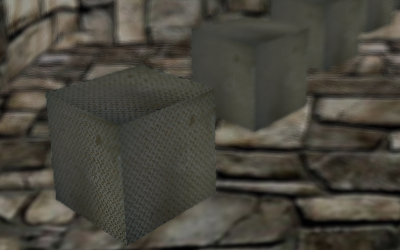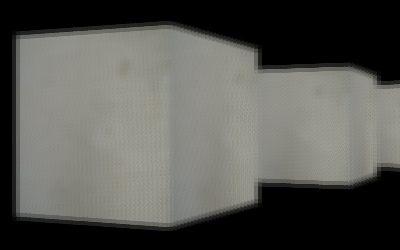I consider depth of field as one of the most beautiful post-processing effects of the “next-gen” games.
It was natural for me to choose it as the first shader demo to implement after months of inactivity, as a matter of fact GLSL_impgro was really just a testbed for post-processing basic techniques, like Frame Buffer Objects.

I have studied the theory from an ATI paper included in the ShaderX2 book, titled Real-Time Depth of Field Simulation, I have choosen the first of the two different implementation and converted it from Direct3D and HLSL to OpenGL and GLSL.
Of course, being a post-processing effect, the rendering is actually divided in two pass:
- Rendering the scene storing the depth of every vertex and calculating the amount of blur per fragment
- Applying the blur per fragment based on the value from the previous step
The second pass fragment shader, the one which is really applying the blur effect, is slow even on my 8600GT, because it performs several calculations for every one of the twelve fragments that are contributing to the blur of the center one.
Another interesting aspect is that, in order to calculate a correct approximation of the circular blur needed for circles of confusion simulation, these twelve pixel are sampled around the center based on a poissonian disc distribution, thus creating much less artifacts than a small convolution matrix scaled too much in order to sample from far away the center.
Just like the previous demo you can view it in action on my YouTube Channel, but I really suggest you to give a look to the high definition 720p version instead, hosted together with the other ones on my Vimeo page. 😉

